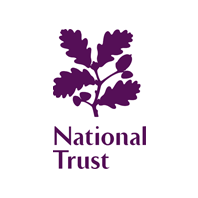May blossom is hawthorn blossom. Hawthorn, Crataegus monogyna, is part of the rose family Rosaceae, sometimes called the May tree and the flowers used for May day garlands. The beautiful, late blossom is great for a variety of insects. The flowers are hermaphrodite meaning each flower has both male and female structures. Flowers of this kind are called perfect, having both stamens and carpels. Once pollinated the tree produces haws (hawthorn berries) which are an essential food source over the winter months for birds such as thrushes and waxwings.
In herbal medicine hawthorn is used to treat cardiac insufficiency, anxiety related heart problems. The flowers, berries and leaves are all edible. The petals were used in a medieval English recipe for spinee, an almond-milk based soup/stew recorded in 1390 by King Richard II’s chef.
Superstitions around hawthorn include using it to protect against witchcraft, placing it above doors and in baby’s cradles. Also, a lone tree must never be cut down as it is the meeting place of fairies. But it is believed by some to bring bad luck and if a branch is bought into the house someone will die.
Whenever clearing scrub we try and leave the hawthorn trees. There is an old tree on Dodman that we have propped up one limb to help keep it going. The oldest hawthorn is thought to be around 700 years old, known as the Hethel Old Thorn, found in a graveyard in the village of Hethel in Norfolk.
Mayflies, also known as green drake mayflies, are found near water and wetland habitats. They have transparent lacy wings and three long tails. There are 51 different mayfly species in the UK and despite the name can be seen all year round. There is one species, Ephemera Danica, that emerges in time with the hawthorn blossom, and this is where the name derives from.
The life cycle of a mayfly can take one to two years, but the nymph form can last up to three years. The nymph stage lives on the riverbed, burrowing in the gravel and filter feeding. Adults emerge and live for a very short time, maximum four days, the females dipping their abdomens on the surface of the water to lay eggs.
Mayflies are known to be one of the first winged insects to evolve with fossils dating back over 300 million years. They are an important food source for fish and birds such as swallows. Mayflies are in decline and work is being carried out to try and find out why. Three Bays Wildlife group has been working with volunteers to survey local rivers in partnership with the Rivers Trust and Anglers Riverfly Monitoring Initiative (ARMI) to help monitor our water ways.
We hope you enjoy May blossom and mayflies across the Roseland and beyond.
For more information or any questions email roseland@nationaltrust.org.uk

